Design Inspiration from Nature
Air Date: Week of November 16, 2012
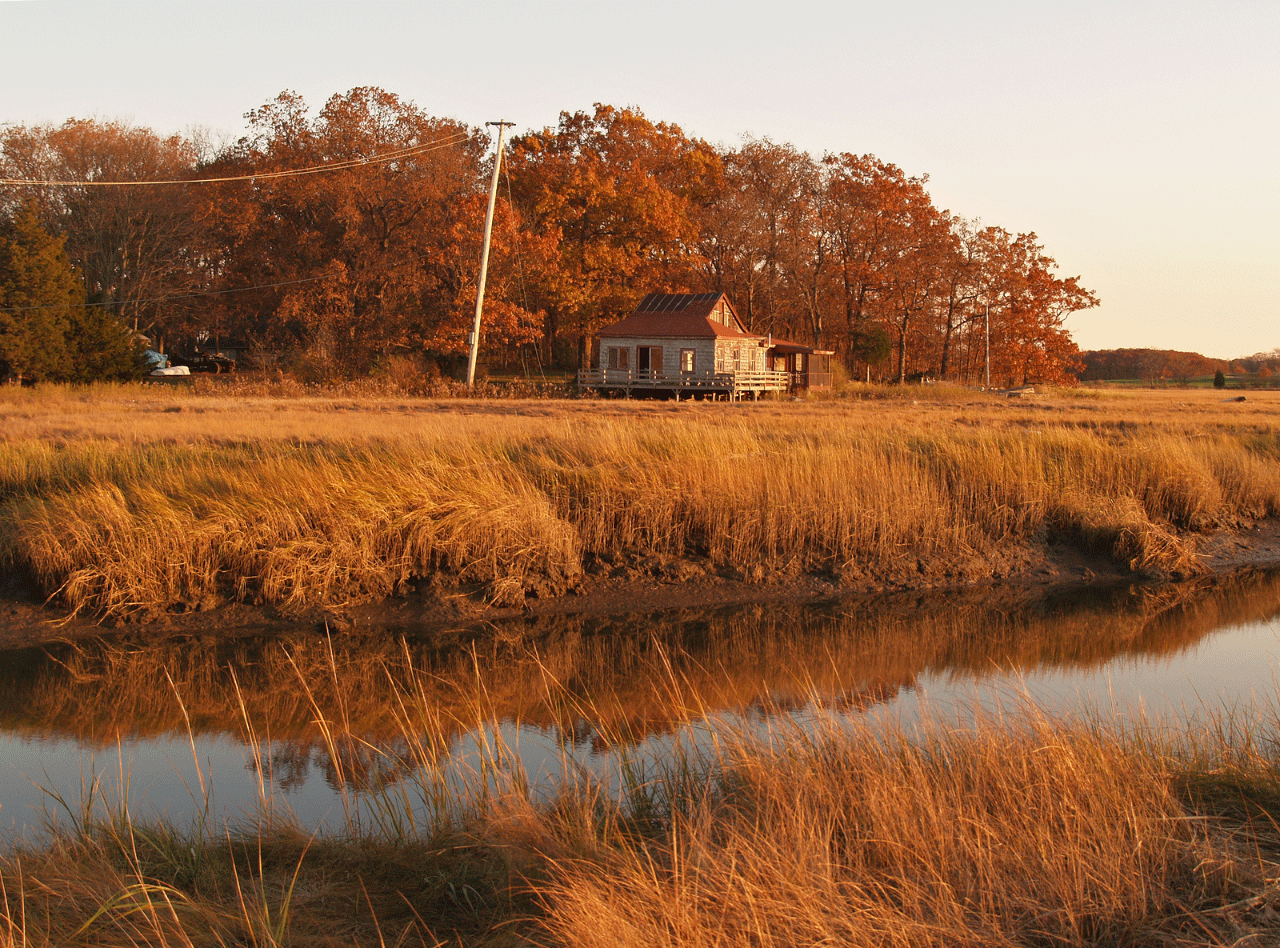
Salt marshes provide critical ecological services such as nutrient cycling and water filtration. (photo: Bigstock).
When it comes to adaptation, Mother Nature knows best. Now, scientists are looking to Mother Nature for answers to some of our biggest environmental problems. Host Steve Curwood talks with Anamarija Frankic,(AN-uh-murr-EE-yuh FRAN - kitch) a Biomimicry Institute Fellow and Director of the Green Harbors Project at the University of Massachusetts, Boston.
Transcript
CURWOOD: When it comes to adaptation, Mother Nature knows best. It makes sense, then, that mimicking nature may be the best way to cope with all sorts of challenges. Here to talk with us is Anamarija Frankic, a fellow at the Biomimicry Institute at the University of Massachusetts, Boston and Director of the Green Harbors Project. Welcome to Living on Earth!
FRANKIC: Hi, thank you for having me!
CURWOOD: Just for a basic explainer, what is biomimicry and why should we focus on it?
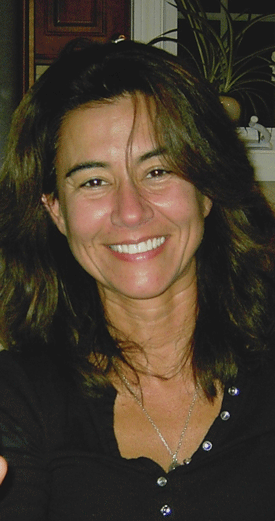
Anamarija Frankic, Biomimicry Institute Fellow and Director of the Green Harbors Project at the University of Massachusetts, Boston. (Photo by Anamarija Frankic).
FRANKIC: Biomimicry really utilizes biological models to evolve sustainable solutions to environmental, technological, engineering and design challenges that we have. And to not only learn from nature, but also learn about nature and its complexity to address our problems today. It’s almost like a common sense.
CURWOOD: Give me an example of biomimicry.
FRANKIC: When we are now building anything in our everyday life, we use glues to combine different structures. Most of those glues are based on formaldehyde, which is very poisonous. So, we are now using the same structures that we learned from shellfish that are using glues – organic glues – that are harder than any glues humans are able to create.
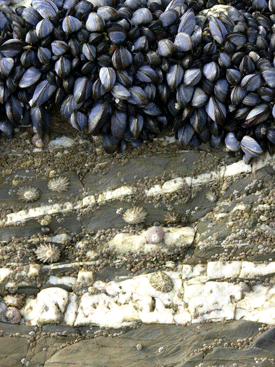
Blue mussels attach themselves to rocks in harsh conditions using only natural adhesives. Photo by John Davey, Courtesy of The Biomimicry Institute.
CURWOOD: Ah, what’s the secret to those organic glues? I know trying to get barnacles off the bottom of a boat is really an ordeal!
FRANKIC: Yes, and when you want to collect shellfish and specifically oysters, you need to use very hard hammer to detach them. When we talk about this organic glue, we are trying to use chemicals that are soluble in waters, that are not harmful to nature, because that’s the key principle, that nature produces chemicals that are not harmful to itself or to the next generation.
CURWOOD: Now, how can you use biomimicry to address questions of storm surges – what we saw around superstorm Sandy in the New Jersey/New York area, reminds us that our natural barriers to protect against storm surges are gone!
FRANKIC: That’s a question that, in the last 10 years, biomimicry has been working with designers and architects and landscape architects, to create what we call soft structures, so living structures along our hard structured harbors. Because, what we created in our urban harbors is like a very firm line between the water and the living coastal areas in our built harbors.
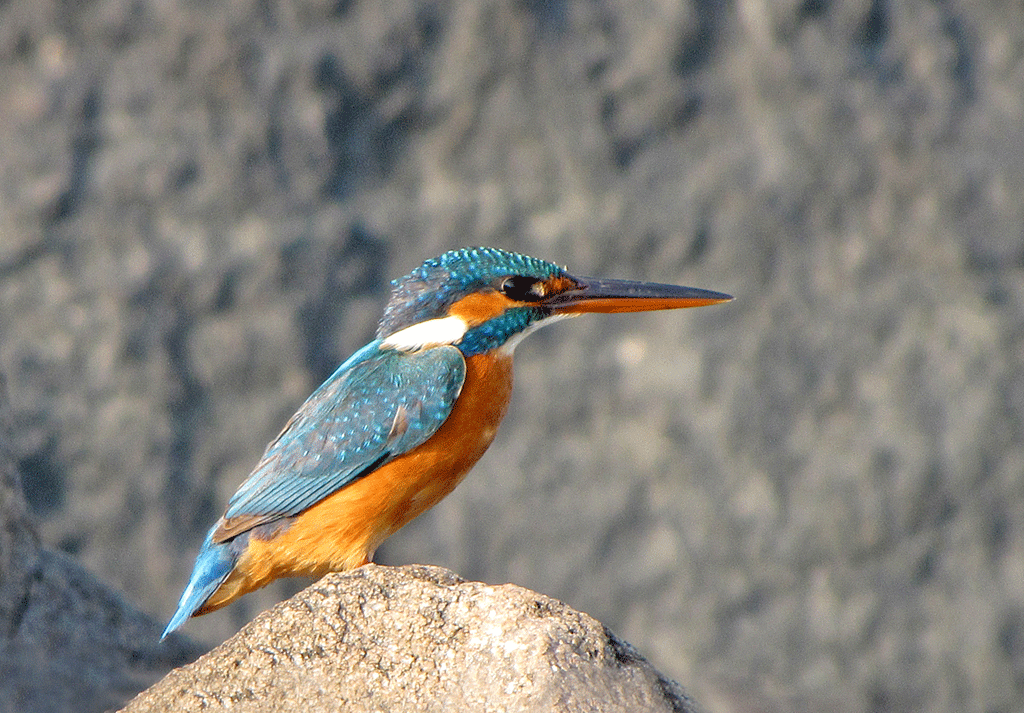
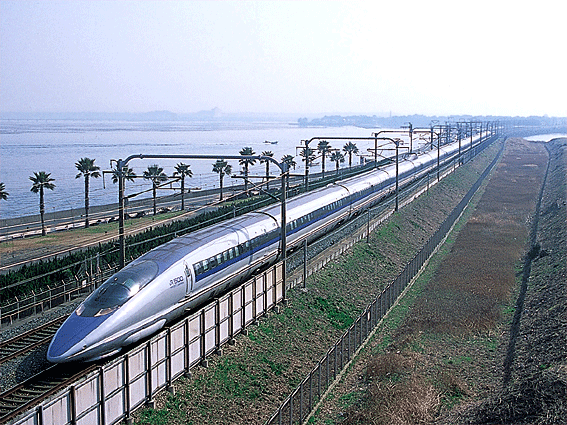
The kingfisher beak is so aerodynamic, the bird can dive for fish without making waves. The Shinkansen Bullet Train is influenced by the kingfisher’s beak. (Photos by BakaOnigiri, Wikimedia & by Flickr photographer wildxplorer, Courtesy of The Biomimicry Institute.)
And very often those lines are very concrete and straight. I always tell my students: If you find a straight line in the nature, call me, because everything has a reason how it formed, and designed and created the strategies that will, in a very long time, over millions of years, support their function in becoming more resilient and sustainable.
And how can we now build our structures that can biomimic the type of salt marshes and sea grass beds and eel grass beds, and that could maybe also in the biomimicry understanding – how could we also build structures in the long run that can support us and also be more adaptable for the environmental changes that we are constantly experiencing more and more so.
CURWOOD: Anamarija Frankic is a Biomimicry Institute fellow and Director of the Green Harbors project that the University of Massachusetts in Boston. Thank you so much!
FRANKIC: Thank you very much for having me!
Links
Anamarija Frankic’s profile for the University of Massachusetts, Boston
Ask Nature is a webpage showcasing innovative biomimicry designs
Living on Earth wants to hear from you!
Living on Earth
62 Calef Highway, Suite 212
Lee, NH 03861
Telephone: 617-287-4121
E-mail: comments@loe.org
Newsletter [Click here]
Donate to Living on Earth!
Living on Earth is an independent media program and relies entirely on contributions from listeners and institutions supporting public service. Please donate now to preserve an independent environmental voice.
NewsletterLiving on Earth offers a weekly delivery of the show's rundown to your mailbox. Sign up for our newsletter today!
 Sailors For The Sea: Be the change you want to sea.
Sailors For The Sea: Be the change you want to sea.
 Creating positive outcomes for future generations.
Creating positive outcomes for future generations.
 Innovating to make the world a better, more sustainable place to live. Listen to the race to 9 billion
Innovating to make the world a better, more sustainable place to live. Listen to the race to 9 billion
 The Grantham Foundation for the Protection of the Environment: Committed to protecting and improving the health of the global environment.
The Grantham Foundation for the Protection of the Environment: Committed to protecting and improving the health of the global environment.
 Contribute to Living on Earth and receive, as our gift to you, an archival print of one of Mark Seth Lender's extraordinary wildlife photographs. Follow the link to see Mark's current collection of photographs.
Contribute to Living on Earth and receive, as our gift to you, an archival print of one of Mark Seth Lender's extraordinary wildlife photographs. Follow the link to see Mark's current collection of photographs.
 Buy a signed copy of Mark Seth Lender's book Smeagull the Seagull & support Living on Earth
Buy a signed copy of Mark Seth Lender's book Smeagull the Seagull & support Living on Earth

